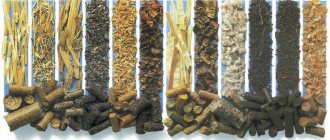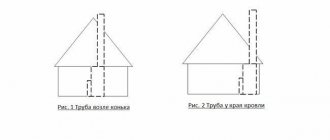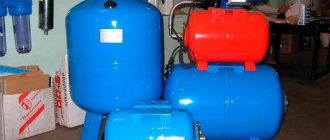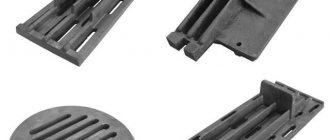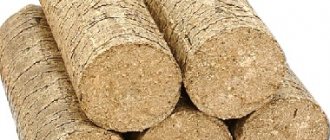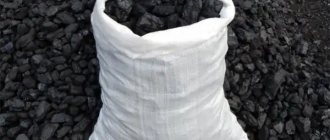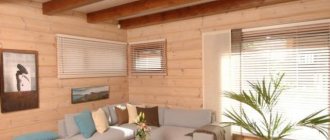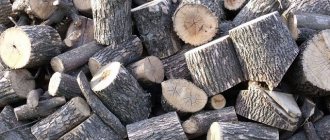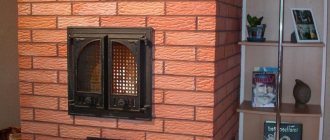December 30, 2021
Pressed briquettes (euro firewood) are quickly gaining popularity among owners of country houses, dachas, and cottages. The new environmentally friendly type of fuel does not require splitting, unlike conventional firewood, and has a longer burning time. It has no pungent odor, no formation of dust, smoke or ash. In 2021, the number of people wishing to buy fuel briquettes in St. Petersburg has increased even more. What explains this popularity? Is Euro firewood really that good and economical? Let's figure it out.
Fuel briquettes
What are fuel briquettes made of?
Euro firewood is small bars consisting of dry crushed waste compressed under high pressure: wood shavings, grinding dust, sawdust, pine needles, peat, husks, straw (and other agricultural waste). The main advantage and main feature is the use of exclusively natural raw materials. No formaldehydes, resins, adhesives or other chemicals are used as binders. During the briquetting process, the bonding of raw material particles to each other occurs due to lignin, a substance that is contained in the wood itself and is released during the technological process.
Comparison and characteristics of fuel briquettes, or Euro-firewood
The search for an alternative fuel sometimes leads to unexpected results. And it all started with wood - the mother of all modern coolants. And it would seem that it was completely lost against the backdrop of cheap gas, efficient diesel fuel or exotic solar energy. But the time has come to take a fresh look at wood, and the reason for this was the emergence of a new product - fuel briquettes, or as they are also called, Euro-firewood.
They are a compressed mass, consisting in most cases of wood waste (sawdust, shavings, etc.). Briquettes may differ in composition, shape and production method. But regardless of these parameters, they all have certain physical properties.
Properties
The physical properties of briquettes fully correspond to wood, since it is part of their composition. But there are certain differences in characteristics.
The main problem with simple firewood is the increased humidity and ash content. When any type of wood burns, a certain amount of minerals remains. For many breeds, this parameter ranges from 1.2 to 3% of the total mass. At the same time, due to the primary processing of raw materials before the production of briquettes, the ash content can be reduced to 0.7%.
There is also the so-called external ash - mineral substances that got into the firewood during its preparation, transportation or storage. These impurities can be included in the composition with a 15% content. Briquettes are completely free of this “unnecessary” component.
The calorific value (transfer of internal energy to the surrounding space) for firewood has a maximum value of 3000 kcal/kg. For briquettes, this value ranges from 4400 to 5200 kcal/kg.
We can summarize the results with a small table of briquette characteristics:
| Index | Meaning |
| Calorific value, kcal/kg | 4500 |
| Ash content, % | 0,5-1,3 |
| Density, t/m³ | 1,2 |
Knowing these data, you can professionally choose one or another type of briquette fuel. But before that, it’s worth considering their advantages and disadvantages.
Advantages:
- High calorific value.
- During the combustion process, a small amount of CO2 is released - several orders of magnitude lower than that of coal or gas.
- Minimal formation of ash, which can subsequently be used as mineral fertilizer.
- Convenient form for storage.
- Higher density compared to conventional wood. This allows you to obtain a sufficient amount of heat with smaller briquette sizes.
Flaws:
- Briquettes are more expensive than regular firewood. But their effectiveness is much higher.
- Organization of a special storage place.
There are several types of this fuel, each of which differs in the degree of processing and form.
Cylindrical
In most cases, this is pressed wood pulp of a cylindrical shape; they are often called Euro firewood.
Some types have a longitudinal hole. Its presence indicates the method of production. The prepared and dried raw materials are poured into a container, the neck of which leads to a screw, which is located in the pipe. The screw transports the wood pulp to the pressing zone, where it is dosed into a cylindrical pressing mold. Next, ready-made briquette forms are formed under a pressure of 500-600 bar.
The advantage of this technology is the minimal equipment of the production line and high productivity.
Geometric dimensions:
- Diameter: 60-90 mm.
- Length: from 50 to 350 mm.
Rectangular
Another name is firmly attached to this type of briquettes – RUF. It was borrowed from the manufacturer of pressing equipment - the German company Ruf.
They have a rectangular shape and are easy to store. No special additives are used in their production, only pure sawdust. Equipment for this form of briquettes is supplied by several European companies. And despite its low price, the quality of the products almost always remains at a high level.
Geometric dimensions – 65*95*150 mm.
Multifaceted
The main problem with the products described above is the fear of moisture. To solve this problem, special equipment was developed that allows not only to press sawdust, but also to perform external heat treatment of briquettes.
Their shape can be 4- or 6-sided. As a result of exposure to temperature, the surface acquires a dark brown color and a protective moisture-resistant layer is formed. Another feature is the high press pressure – up to 1100 bar. This increases the density of the product and, accordingly, its combustion efficiency.
Calculation of heating costs: how profitable is it to use fuel briquettes
Let's determine the approximate consumption of the products in question for one heating season. There are many calculation formulas that take into account the number of windows, wall materials, thermal insulation, ceiling height and other parameters. But the main characteristic is the area of the room. The larger the house, the more fuel will need to be burned to heat it. On average, heating a small house with a total area of 200 m2 will require about 7 tons of euro-wood. The lowest price per ton of this material is 4,000 rubles, but there are also higher prices. Accordingly, the minimum price for heating a house of 200 square meters is 280,00 rubles. However, quite often European firewood is packaged in small packages weighing 10 kg. As a rule, they contain up to 12 pieces. logs Prices for such briquettes start from 59 rubles. Taking a package of several kg is beneficial if the product is planned to be used not as the main one, but as an additional source of heating. For example, from time to time, take a few briquettes and throw them into the fireplace to enjoy a bright, live fire.
Fuel briquettes Eurowood
Overall, this is not the cheapest type of fuel. For example, gas heating is more economical. But at the same time, the cost of the gas equipment itself, laying communications and connections will be more expensive than the purchase of solid fuel boilers, fireplaces or stoves. In addition, fuel briquettes are environmentally friendly raw materials. Unlike gas, they do not emit CO2 and fill the house with a pleasant woody aroma during combustion.
Wood briquettes are more economical than coal and firewood:
- briquettes have 2.5 times higher thermal conductivity than ordinary firewood and the same as coal;
- the density of briquettes is 2–2.5 times higher;
- briquettes burn much longer than regular firewood;
- low ash content (less than 1%).
Birch fuel briquette
RUF fuel briquettes made from birch dust
– an economical and calorific fuel for stoves, fireplaces, central heating boilers, wood-burning stoves and heaters and other solid fuel-burning installations. Fuel briquettes from wood dust are produced from environmentally friendly raw materials by pressing birch dust on a high-pressure hydraulic press into pieces of the correct geometric shape, convenient for storage and transportation. RUF briquette is a rectangular parallelepiped (“brick”) of wood color in shades characteristic of birch raw materials. When producing briquettes from birch dust, no chemical binders, adhesives or bleaches are used. Therefore, when burning briquettes, foreign odors and substances characteristic of chemical components are not released. The main advantage of birch dust briquettes in comparison with RUF sawdust fuel briquettes is a long burning time, exceeding the burning time of sawdust fuel briquettes, due to the higher density of the briquette. Wood dust particles are smaller than sawdust, as a result of which a more dense briquette structure is formed, which inhibits its destruction during the combustion process. RUF fuel briquettes made from birch dust traditionally have a high calorific value of 4800-4900 kcal/kg.
High calorific value, long burning time and affordable cost make dust briquettes an excellent choice for heating a house, cottage, hotel, garage or outbuildings during cold periods.
The main advantages of using fuel briquettes:
- ready to use immediately after purchase;
- long burning time;
- no added chemicals or glue;
- low humidity of briquettes (less water, more fuel);
- low ash content. The ash content of RUF fuel briquettes made from birch dust is about 0.3-0.4%;
- Compact storage and easy use. The convenient shape of the briquettes allows you to compactly store large reserves of fuel, which is especially important when storing European firewood in the house;
- do not leave waste in the storage area. When storing ordinary firewood in a house, a lot of debris remains - bark, wood chips, sand, earth, while briquettes are packed in plastic film;
- reducing home heating costs. Savings are achieved not only by reducing the cost of fuel (compared to conventional firewood), but also by reducing transportation costs and eliminating the cost of preparing conventional birch firewood for use.
By purchasing RUF fuel briquettes, you save time, money and space for storing fuel.
Technical characteristics of RUF fuel briquettes made from birch dust.
| Indicator name | RUF fuel briquettes made from birch dust |
| Calorific value, kcal/kg | ≈ 4800-4900 |
| Humidity, % | ≈ 8-10 |
| Ash content, % | ≈ 0,3-0,4 |
Manufacturer: Russia. Fuel briquettes (euro firewood) from a Russian manufacturer are high-quality and safe raw materials and lack chemical additives.
Size of RUF fuel briquettes.
Length - 150 mm, width - 100 mm, thickness - 60 mm.
Package.
Euro firewood is packed in a plastic bag, 12 pieces/pack.
Weight.
One package 10 kg (12 briquettes). Packages with briquettes are placed on a pallet, the weight of one pallet is 1 ton. Pallet area – 1m2.
Ignition method.
Igniting briquettes is similar to igniting regular firewood. To ignite Euro-firewood, both conventional means (paper, wood chips) and traditional means for ignition in the form of gel can be used. Ignition methods, required materials and precautions are discussed here - How to light RUF or Pini Kay fuel briquettes?
When using for the first time (especially if ordinary firewood was previously used for heating), start placing briquettes into the combustion chamber (furnace) with a small amount, gradually selecting the optimal amount of briquettes for a given type of stove or boiler.
Do not fill the entire volume of the combustion chamber (furnace) with briquettes at once. This will prevent overheating of pipes and structural elements of the furnace or heating boiler.
Storage conditions.
It is recommended to store it indoors at low humidity, in conditions that prevent water from entering the briquettes.
Main scope of use:
- Stoves, fireplaces, stoves using wood fuel;
- Central heating boilers.
RUF fuel briquettes - profitable, affordable, convenient.
What are the advantages of fuel briquettes
Fuel briquettes
The type of fuel in question is a new word in the field of heating stoves and fireplaces. In addition to heating the house, heating briquettes are suitable for heating saunas and baths. You can enjoy the beautiful flame and warmth of the hearth - all this is possible with Euro-firewood. So, let's look at their main strengths:
- briquettes are suitable for laying in any types of stoves, solid fuel boilers and fireplaces, for baths and saunas;
- high calorific value of 4500-4900 kcal/kg (for conventional firewood no more than 2700 kcal/kg), due to which Euro-firewood has a 1.5–2 times higher combustion temperature;
- briquettes burn almost completely, have a low ash content and do not leave soot - they practically do not pollute the firebox and chimney, and accordingly, maintenance of heating equipment is significantly simplified;
- Briquettes have low humidity (no more than 8%), which is explained by the production technology - they are forcibly dried in special chambers;
- due to low humidity, European firewood flares up quickly and has higher efficiency;
- Euro firewood is a completely harmless and environmentally friendly product, which does not contain harmful chemicals; during combustion, very little CO2 is released;
- wood briquettes do not smoke, do not spark and do not leave an unpleasant odor;
- light weight and convenient packaging ensure ease of transportation and storage;
- Briquettes are packaged in plastic film, which allows them to be stored for a long time without signs of rotting.
Briquettes made from a mixture of sawdust from deciduous and coniferous trees
Nielsen
Fuel briquette made on an impact machine. Has the shape of a cylinder. Very dense, high thermal performance and burning time.
| Options: | |
| Briquette size (length * diameter), mm: | 270x90 (cylindrical) |
| Compound: | sawdust from deciduous and coniferous trees |
| Color: | light gray |
| Calorific value: | 4300-4900 kcal/kg |
| Humidity: | up to 12% |
| Density: | 1.2 g/cm3 |
| Ash content: | up to 0.9% |
| Package: | polyethylene |
| Weight of 1 package: | 10 kg (+/- 5%). in 1 ton - 100 packages |
| Packaged: | 6 briquettes |
Suitable for all types of stoves, ideal for solid fuel boilers, for heating a home, for baths and saunas. Suitable for heating fireplaces, they have the usual log shape. Can be used for grilling as charcoal.
PRICES
INFORMATION
